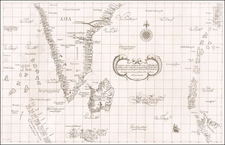Jain Cosmological Map of the World and Universe
Interesting hand drawn Jain Cosmological map, based upon a mapping tradition that dates back to the 13th century.
Jambudvipa, the land of the rose-apple tree, exists in Jain cosmology as the central realm, the middle world, from which liberation of the cycle of rebirth is possible. Historically, followers have been highly literate with a tradition of intellectual and philosophical curiosity.
Jainism, one of the most ancient Asian religious cultures, holds that three realms exist - an upper or celestial world, the middle or mortal world and the lower, infernal world. Abstract representations of these concepts are recorded from the thirteenth century onwards and exist on paper or parchment, linen and stone and were displayed in temples, pilgrimage sites or carried by Holy men. They were typically produced in the north-west Indian states of Rajasthan and Gujarat, the areas in which Jainism was predominant. These cosmological diagrams, essentially maps of theological imagination, may show the entire cosmos of three continents concentrically arranged and separated by oceans, as in this case, or the central region, Jambudvipa, alone.
According to Jain cosmology, only the middle world (Madhyaloka) is inhabited by humans, visualized in the Jain map of the universe (Adhaidvipa) as a series of concentric continents separated by oceans. Shown here is the central continent, Jambudvipa (the known world, according to the ancient Indian worldview), divided into countries by mountain ranges, with rivers that flow into the ocean that surrounds it. Sacred Mount Meru, its highest point, sits at the very center.
The present example is painted in gouache on paper with overall bright and vivid coloring and decorated with sea creatures.
Most Jain cosmological maps are gouache on linen and tend not to be well preserved. This example, drawn on paper, is an unusual survival. Dating these maps can be difficult an inexact.
Jainism & Cartography
Jainism has its own version of geography and cosmology. This chart shows the world of human habitation as a central continent with mountain ranges and rivers, surrounded by a series of concentric oceans (with swimmers and fish) and ring-shaped continents.
The early Jains divided the universe into three parts: the heavens or realms of the gods (Urdhva Loka), the realms of the humans (Madhya Loka), and the realms of the hellish beings (Adho Loka). So the image above is a depiction of Madhya Loka, the realms of the humans.
Madhya Loka consists of at least eight continent-islands, arranged concentrically, each of which is surrounded by an ocean (typically with some sort of succulent name, like "Sugar Ocean" or "Ocean of Milk"); you can see those continent-rings clearly on this map. Humans live on Jambudvipa, the island at the center of the world; and at the center of Jambudvipa is Mount Meru, the highest point and center of the world. (According to Wikipedia, the quasi-mythical Mount Meru corresponds to the real world's Nagard Sarovar, in the middle of the Pamir Mountains.) At the summit of Mount Meru is Brahmapuri, the great city of Brahma, the god of creation.
The early Jains contemplated the nature of the earth and universe and developed a detailed hypothesis on the various aspects of astronomy and cosmology.
Jain cosmology is the description of the shape and functioning of the physical and metaphysical Universe (loka) and its constituents (such as living beings, matter, space, time etc.) according to Jainism, which includes the canonical Jain texts, commentaries and the writings of the Jain philosopher-monks. Jain cosmology considers the loka, or universe, as an uncreated entity, existing since infinity, having neither beginning nor end. Jain texts describe the shape of the universe as similar to a man standing with legs apart and arm resting on his waist. This Universe, according to Jainism, is broad at the top, narrow at the middle and once again becomes broad at the bottom.
Mahāpurāṇa of Ācārya Jinasena is famous for this quote: "Some foolish men declare that a creator made the world. The doctrine that the world was created is ill advised and should be rejected. If God created the world, where was he before the creation? If you say he was transcendent then and needed no support, where is he now? How could God have made this world without any raw material? If you say that he made this first, and then the world, you are faced with an endless regression."
The Jain doctrine postulates an eternal and ever-existing world which works on universal natural laws. The existence of a creator deity is overwhelmingly opposed in the Jain doctrine. The universe has a firm and an unalterable shape which is measured in the Jain texts by means of a unit called Rajju which is supposed to be very large. The Digambara sect of Jainism postulates that the universe is fourteen Rajju high and extends seven Rajjus from north to south. Its breadth is seven Rajjus at the bottom and decreases gradually till the middle where it is one Rajju. The width then increases gradually till it is five Rajju and again decreases till it is one Rajju. The apex of the universe is one Rajju long, one Rajju wide and eight Rajju high. The total space of the world is thus 343 cubic Rajju. The svetambara view differs slightly and postulates that there is constant increase and decrease in the breadth and the space is 239 cubic Rajju. Apart from the apex which is the adobe of liberated beings, the universe is divided into three parts. The world is surrounded by three atmospheres: dense-water, dense-wind and thin-wind. It is then surrounded by infinitely large non-world which is absolutely empty.
The whole world is said to be filled with living beings. In all the three parts, there is the existence of very small living beings called nigoda. Nigoda are of two types: nitya-nigoda and Itara-nigoda. Nitya-nigoda are those which will reborn as nigoda throughout eternity where as Itara-nigoda will be reborn as other beings too. The mobile region of universe (Trasandi) is one Rajju wide, one Rajju broad and fourteen Rajju high. Within this, there are animals and plants everywhere where as Human beings are restricted to 2.5 continents of middle world. The beings inhabiting lower world are called Naraki (Hellish beings). Deva (roughly demi-gods) live in whole of the top and middle world and top three realms of lower world.
Living beings are divided in fourteen classes (Jivasthana) : 1. Fine beings with one sense. 2. Crude beings with one sense. 3. Beings with two senses. 4. Beings with three senses. 5. Beings with four senses. 6. Beings with five senses without mind. 7. Beings with five senses with a mind. These can be under-developed or developed which makes it a total of fourteen. Human beings get any form of existence and are the only ones which can attain salvation.









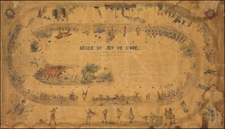
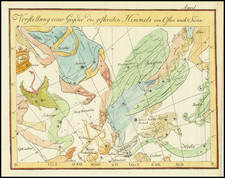
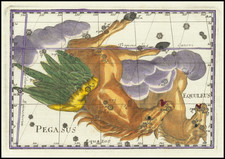
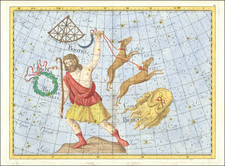
![[World Map / Malaria / Dr. Seuss ] This is Ann . . . She drinks blood!](https://storage.googleapis.com/raremaps/img/small/73499.jpg)
